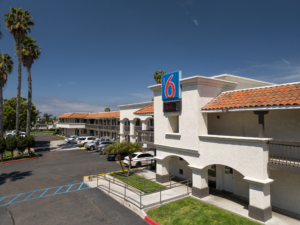San Francisco waiting for RevPAR, occupancy recovery
San Francisco waiting for RevPAR, occupancy recovery
By Alicia HoisingtonSep 19, 2023 02:07pm
San Francisco offers a diverse set of demand generators, such as popular tourist attractions like the Golden Gate Bridge, Fisherman’s Wharf and more. But the market has been slow to recover to pre-pandemic performance levels. That, paired with other financial factors, makes the outlook for the city’s hotel market a bit of a mixed bag.
On the investment and development side for San Francisco’s hotel industry, like many markets across the United States, the top story is the banking industry’s recent upheaval. Where interest rate hikes used to be the biggest worry for investors, now the added trouble of banks pulling away from commercial real estate assets—such as hotels and office buildings—is a major concern.
But the good news for hoteliers in San Francisco? Because San Francisco is a market with high barriers to entry, owners have not been as motivated to sell their assets. “It’s why we’re not seeing a lot of product in San Francisco trading. People are still bullish on the city in the long term,” said Alan Reay, president of Atlas Hospitality Group.
“The bottom line is [that] if you’re a hotel owner and don’t have a loan coming due in the next couple of years, you should be able to weather the storm,” he added.
However, for hotel investors who want to get into high-barrier-to-entry San Francisco, they may be able to do so at lower prices in the near term. “We are starting to see some deals being sold at discount to replacement cost, and lenders are getting more motivated to sell off their hotel loans at a discount. As hotel loans come due in 2023 and 2024, we will see new, lower prices,” Reay said.
According to the “2022 Year-End California Hotel Sales Survey” from Atlas, by 2022, the average price per room decreased 27 percent. Meanwhile, the median price per room was down nearly 49 percent.
Overall, Reay said that when California is compared to other states in terms of hotel deal dollar volume, it’s doing pretty well. San Francisco County saw a 117 percent increase in the number of individual hotel transactions in 2022, from six to 13 deals, according to the Atlas report. Total dollar volume went up 6.6 percent in 2022.
Reay attributes that to two big new buying factors for California: government programs to convert buildings to housing to help the unhoused population and developers buying properties to convert to apartments. “Cities wouldn’t allow the zoning change before because they didn’t want to take away revenue from transient occupancy taxes. That’s all changed in the last 12 to 18 months in California because they need to provide affordable housing,” Reay said.
Performance Slumps
The high houseless population issue is one of the biggest challenges facing the area, according to John Spear, managing director of the 44-room Hotel Drisco in San Francisco. He said it’s one of the toughest problems for the city to solve, and it’s contributing to San Francisco losing convention business. Instead, major conventions are opting for other cities.
“For a hotel like the Drisco, we focus mainly on leisure business and we’re insulated from a lot of the problems. My colleagues in the Financial District have this problem right on their doorstep,” Spear said. San Francisco is reliant on convention and international tourism, mainly from the Asia-Pacific region, according to Reay. So the fact that conventions have been moving out (even before the pandemic) is problematic.
That, along with the city’s strict COVID regulations, has contributed to the fact that San Francisco still has not recovered to 2019 performance levels, sources said. According to data from STR, occupancy for the market stood at 55.1 percent in January 2023. By comparison, the market’s occupancy rate was 82.3 percent in 2019. Average daily rate has recovered, coming in at $303.42 year-to-date January 2023 versus $247.48 in 2019. Revenue per available room in January 2023, however, notched $167.08, well below 2019’s $203.78 RevPAR figure.
“[COVID] restrictions are lifted now, but San Francisco was one of the last major metro areas in all of the U.S. starting the road to recovery,” Spear said.
“We’re continuing to wait for the recovery from COVID. Here’s my optimism: San Francisco is such a huge draw despite its challenges. We’ve got the Golden Gate Bridge, rich performing arts, architecture, a great food scene and more,” Spear said. “All hotels should get back to their pre-pandemic level maybe by 2025 or 2026.”


